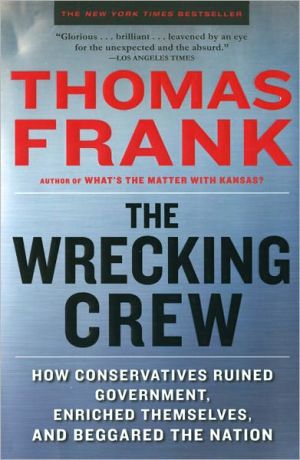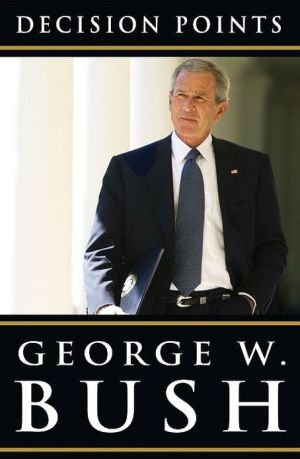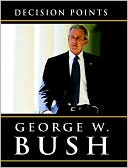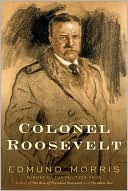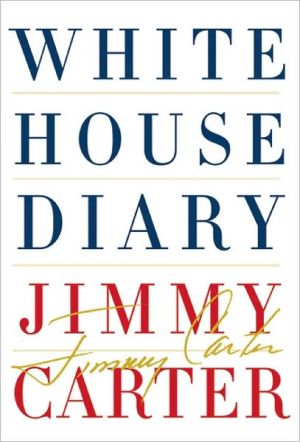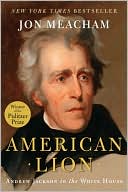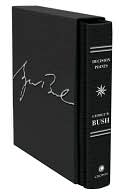The Wrecking Crew: How Conservatives Ruined Government, Enriched Themselves, and Beggared the Nation
From the most astute political scoffer since H. L. Mencken, the definitive account of the conservative reign of misrule and corruption\ Hailed as a “hunk of dynamite” (Salon) and celebrated for its “satiric wit” (The New York Times Book Review) and “delighted outrage” (The New Republic), The Wrecking Crew supplies the first and—lacking future fact-finding commissions—probably the only full reckoning of what conservatism has wrought.\ Casting his eyes from the Bush administration’s final...
Search in google:
From the bestselling author of What’s The Matter With Kansas?, an exposé of the Washington conservatism has built: how it works, how it doesn’t, and why it’s here to stay The Barnes & Noble Review It makes perfect sense to Thomas Frank that George W. Bush would refer to himself as a "dissident in Washington" despite being behind the biggest executive branch power grab this side of Nixon. Conservatives, in what Frank calls a "supremely cynical maneuver," paint themselves as revolutionaries and outsiders even when they're running things; that way, they never have to take responsibility for government's mistakes and can point to those mistakes as proof that government doesn't work. In this nervy, brainy, no-holds-barred book, the liberal commentator argues that the "fantastic misgovernment" we live under -- his examples include the aftermath of Hurricane Katrina and the administration of Iraq -- is "the consequence of triumph...by a movement that understands the liberal state as a perversion and considers the market the ideal nexus of human society." With the sharp analysis and scathing wit that characterized his 2004 bestseller, What's the Matter with Kansas?, Frank covers the decimation of the civil service in favor of outsourcing (the current administration actually tried to "contract out the job of supervising contractors"), the demolition of the regulatory state, and the use of deficit spending to paralyze the government. Frank entertains even as he alarms: he describes right-wing pundit Michelle Malkin as having "the appearance of a Bratz doll but the soul of Chucky," and similar gems pop up on nearly every page. But the overall tone is ominous, with Frank warning that even if the Democrats win the White House, it will require "years of hard political work" to return the government to the people. --Barbara Spindel
Chapter One\ Golconda on the Potomac\ The richest county in America isn’t in Silicon Valley or some sugarland preserve of Houston’s oil kings; it is Loudoun County, Virginia, a fast-growing suburb of Washington, D.C., that is known for swollen suburban homes and white rail fences of the kind that denote “horse country.” The second richest county is Fairfax, Virginia, the next suburb over from Loudoun; the third, sixth, and seventh richest counties are also suburbs of the capital.1 The Washington area has six different Morton’s steakhouses to choose from, seven BMW dealerships,2 six Ritz-Carlton installations, 3 three luxury lifestyle magazines, and a Capital Beltway that is essentially an all-hours Mercedes speedway. There are malcontents all over America with a ready explanation for why this is so: Washington is rich because those overpaid federal bureaucrats are battening on the hard work of people like us, gorging themselves on the bounty that the IRS extracts out of the vast heartland. In blog and barbershop alike they rail against big government like it’s 1979, moaning about meddling feds and cursing the income tax as a crime against nature. As a way of explaining the stratospheric prosperity of Washington today, however, this old, familiar plaint makes as much sense as attributing the price of stocks to the coming and going of sunspots. After all, it isn’t FTC paper pushers who buy the six-thousand-square-foot “estate homes” of Loudoun County, and even the highest-ranking members of Congress drool to behold the fine cars and the vacation chateaus of the people sent to lobby them by, say, the pharmaceutical industry. The reason our barbershop grumblers don’t get it is that their myths don’t account for the swarming, thriving fauna that populates the capital today. Conservative Washington is, by and large, unknown territory. The private offices to which it has delegated the nation’s public business are not included on the tourist’s map. Its monuments are not marked. Its operations are not well understood outside the city. But Washington’s newfound opulence gives us our first clue as to what those operations entail. Washington is a strange place under any circumstances. If you happen to come here from the urban Midwest, as I did, the city seems alien and hopelessly unreal. The blue-collar workers who make up a good portion of the population elsewhere in America are a minority in Washington, with lawyers outnumbering machinists, to choose one example, by a factor of twenty-seven to one. There are few rusting factories or empty warehouses in Washington—and few busy factories or well-stocked warehouses either. The largest manufacturing outfit in town, at least as of the early 1980s, was the Government Printing Of.ce.4 The neighborhood taverns one finds on nearly every street corner in Chicago are almost completely absent, as are the three-.flats that house much of that midwestern metropolis. While the capital has desperately poor people in abundance, members of the political class have almost no reason to mingle with them. If you stay within the boundaries of the federal colony, you will meet only people like your tidy white-collar self: college graduates wearing ID badges and speaking correct American English. In one residential neighborhood I visited, a full 50 percent of the adult population possess advanced degrees. The city is a perfect realization of the upper-bracket dream of a white-collar universe, where economies run on the information juggling of the “creative class” and where manufacturing is something done by .filthy brutes in far-off lands. In the hard-hit heartland this fantasy seems so risible as to not require attention. In Washington and its suburbs, however—where there are hundreds of corporate offices but little manufacturing—it is thought to be such an apt description of reality, such a pearly pearl of wisdom, that the city’s big thinkers return to it again and again. The malls and offices and housing developments of northern Virginia so overwhelmed Joel Garreau, the man on the “cultural revolution” beat at the Washington Post, that in describing them he slipped into the past-tense profundo: the region’s “privateenterprise, high-information, high-education, post-Industrial Revolution economy,” he raved in 1991, “made it a model of what American urban areas would be in the twenty-.first century.”5 Washington has boomed before, and it’s even been proclaimed a model for the world before—most famously during the thirties and forties, when the federal government looked like the savior of the nation and maybe even of the planet. The city was occupied then by an army of “New Dealers” who were talented, idealistic about the possibilities of government, and young—far younger than the gray old gentlemen who had previously run the place. Today we naturally think of Washington as a young person’s town, thanks to all the fresh-faced interns and aides and paralegals who fill its offices. But in the thirties this was a novel development, made possible by the stock market crash and the Depression, which closed other doors and utterly destroyed the traditional American faith in limited government and benevolent business. Disabused of the old myths, and unable to get a job, the class of 1933 went to Washington instead of Wall Street. They lived in group houses, drank hard, and threw themselves into building the new regulatory state. It’s not a calling that anyone associates with glamour anymore, but excitement and high patriotism are constant themes in the literature of the New Deal period. One account from 1935, for example, described the city’s “mood of adventure, the exhilaration of exciting living which the humblest office-holders share with the Brain Trust [the president’s close advisers] as co-workers in the great experimental laboratory set up in their city.”6The stories of that period always seemed to follow the same pattern: how the bright young man arrived in the city, fresh from law school, where he was put to work immediately on business of the utmost urgency; how he went for days without sleep; how he marveled at the awesome abilities of the people the administration had brought to Washington. I know of none in which the young man came to Washington to get rich. When the New Dealers grew older, of course, they found ample opportunity to pile up the coin, often by guiding business interests through the bureaucracies that they themselves had created.7 But in those early years, when business had failed so spectacularly and when the country looked desperately to Washington for relief, public service became the object of a sort of cult.8 Liberalism was something strong and bold in those days, and making government work was at the very heart of it. This was the period when the United States developed a first-rate bureaucracy, and the famous law professor Felix Frankfurter attributed its appearance to the epochal migration of idealistic youth to the capital (a movement for which Frankfurter was partially responsible). “The ablest of them—in striking contrast to what was true thirty years ago—are eager for service in government,” he wrote in 1936. “They find satisfaction in work which aims at the public good and which presents problems that challenge the best ability and courage of man.”9 Like all historical myths, the legend of the capable and selfless New Dealer is surely overdrawn. Even so, there were in those years enough genuine cases of honest public service delivered despite peril to the public servant’s career to make the thirties and forties truly seem like some kind of bureaucratic golden age. The chairman of the Tennessee Valley Authority, for example, provoked the berserk, undying hostility of the senior senator from Tennessee by refusing to allow this worthy to pack the TVA with cronies and patronage hacks. The head of the Office of Price Administration, responsible for wartime rationing, fended off not only the spoilsmen of Congress but the profiteers of the private sector, earning the enmity of senators and industrialists alike. And when Franklin D. Roosevelt’s nominee for chairman of the Federal Reserve was informed that the private sector would agree to his appointment if he would abandon his liberalism, he responded, “You can tell your banker friends to go to hell.”10 True, Washington crawled with millionaires back then, just as it does today. There was a critical difference, however: in those days the millions almost always came from somewhere else. At the turn of the twentieth century, in the golden age of unregulated capitalism, the masters of the great fortunes had found it amusing to settle down among the diplomats and statesmen of the federal city, and so Massachusetts Avenue came to be lined with the grand palazzos of people who had made their pile—or, more accurately, whose parents had made their pile—in mining or manufacturing or railroads or steel or breakfast cereal. Occasionally these nabobs went in for politics themselves: A 1905 novel by David Graham Phillips is set in “one of the very .nest of the houses that have been building since rich men began to buy into the Senate and Cabinet.” But by the thirties their days in public service had ended. Now these patricians spent their time throwing dinner parties for ambassadors, publishing newspapers, settling back into comfortable alcoholic delirium, and, of course, raging against the New Dealers who had supplanted them.11 “Never before have such vast numbers of officials swarmed to the capital, and never before have so few of them been welcomed by the permanent dwellers,” wrote one of these embittered Washington aristocrats in the Saturday Evening Post in 1936, the same year that Felix Frankfurter penned his homage to the visionary young bureaucrat. What Frankfurter saw as idealism was exactly what made the “hordes of New Dealers” so contemptible to the capital’s highborn hostesses. The New Dealer “exists on a high spiritual plane; he, and he alone, is a good man,” the aristocrat sneered. “He proves it by the violent sincerity of his intolerance.” He gives further offense by showing up at dinner parties late or in business clothes, by his inexperience with servants, and by radiating “malice and envy toward the successful,” meaning the tycoons this impudent nobody proposed to regulate. Fortunately, the aristocrat concluded, the New Dealers’ persecution of bankers and captains of industry was inadvertently bringing to town numerous more suitable dinner guests; indeed, “the only attractive and able men who come to Washington today, are brought there by subpoenas.”12 Those swarms of New Dealers changed the appearance of the city, too. The architectural hallmark of their Washington boom was the unassuming two-story, redbrick, colonial-style house, built by the thousands in a great residential arc around the city’s core. These homes were for bureaucrats, not billionaires; they were made affordable by loans guaranteed by the New Deal’s Federal Housing Administration; and they were constructed according to the FHA’s vision of the ideal family dwelling. In Arlington Forest, a suburban neighborhood that opened up in 1939, the houses look like perfect cubes, almost identical, each one set back from the street exactly the same distance, with four windows spaced evenly on the square facade. For your $590 down payment, you got three bedrooms, a kitchen whose sink featured a double drain board, chrome-plated bathroom fixtures, and a basement suitable for remodeling into a rec room. No garage.13 I remember the first time I visited the capital as a college student and found myself in one of those brick-cube neighborhoods, with the rusting Buicks parked in the street and the aluminum bay windows bolted on the fronts of the houses in an effort to disguise their sameness. Surveying a row of them, stretching down the block like packing crates on a conveyor belt, was enough to make one an instant punk rocker, and I recall climbing back in the car, turning up the volume on Government Issue or Naked Raygun, and swearing to myself that I would never live this way. Looking at them today, I can only think of the middle-class nation that we have left behind. To own a house made of bricks was something of a declaration in 1939, and what New Deal Washington was declaring was that everyone in the land was entitled to this: a safe place to raise kids, a good public school, an easy commute, and a shopping center nearby. The model survived up into the seventies. A friend of mine who grew up in the suburb of McLean, Virginia, drove me around his old neighborhood, a typical development of that period, with brick split-levels and lots of houses with flimsy pillars out front. He pointed out for me the row house his family owned, the park he played in, the Safeway he walked to, the public schools he attended. No, he wasn’t able to tee off from his patio if he wanted, but it was a pleasant way of life nevertheless. His mom stayed home, his dad worked on Capitol Hill, and the whole arrangement was affordable on a congressional aide’s annual salary of $20,000. It was designed to be that way; that’s what liberalism was all about. The Washington boom that began in the eighties and that exploded under George W. Bush was of an entirely different character. This time the millionaires were homegrown, and the template for Washington housing was ostentatious, aristocratic, and gargantuan. Driving around McLean these days you get the impression that the capital is minting tycoons the way it used to generate environmental regulations and amendments to the tax code. Every few miles you pass another castle going up, sometimes with stone posterns so large they are seemingly meant to serve as a defensive perimeter. Battlements are much in vogue; one house I saw had matching his ’n’ hers turrets on either end. For those not so keen on martial architecture, there is the good old Washington colonial, only tripled in size, like three of the Arlington Forest cubes arranged in a flying wedge, with a three-car garage trailing along behind. The one I visited, after reading an advertisement headlined “Celebrate Your Destiny,” was a Grand Monet, a model in the “two to two-point-five” range. A more affluent destiny might conceivably lead you to other models, like the Grand Michelangelo, the Grand Cézanne, the Grand Rembrandt, or even the Grand Rembrandt Platinum. But the Grand Monet was good enough for me. It towered over the surrounding neighborhood of brick ranches and split-levels like an elephant in a herd of cows. Not to worry, though; this was a tear-down section of McLean, I was assured, where destruction was inevitable and everyone knew it. What would be left when the inevitable had come to pass was an entire neighborhood of houses like the Grand Monet: a billowing drywall circus tent, with granite countertops and beige carpets and fiberglass bathtubs and walk-in closets large enough by themselves to contain a bedroom from one of the New Deal colonials. There was space for a huge TV in the family room and for an even bigger TV in the basement “theater room,” where a thick tangle of wires waited to deliver exceptional entertainment experiences to the discerning eyes and ears of the occupants. This sort of grandiosity is typical of recent suburban development everywhere in America, but in northern Virginia the form has been brought to a grotesque consummation—a platinum consummation in which the developer’s worst instincts are permitted their full expression. At Evans Farm, a gated and walled-off subdivision built on the last green space in the area, the developers shoehorned in the luxe and the splendor so tightly that visitors start to think they’re actually in a city . . . a city where Beaux Arts and Tudor houses have been whimsically incorporated into blocks of Georgian Revivals. At the Reserve, the preeminent choice of local millionaires a few years ago, the houses run to “12,000 square feet of luxurious and innovative space,” as a builder’s Web site brags, but propping them up on the hilly terrain appears to require earthworks of such height and mass that they might have been borrowed from a medieval castle. When you drive among these wonders, northern Virginia appears as a kind of technicolor vision of prosperity, American-style; a distillation of all that is mighty and righteous about the American imperium. The airport designed by Eero Saarinen; the shopping mall so vast it dwarfs other cities’ downtowns; the finely tuned high-performance cars zooming along an immaculate private highway; the masses of flowers in perfectly edged beds; the gas stations with Colonial Williamsburg cupolas; the men all in ties and starched, buttoned-down shirts; the street names, even, recalling our cherished American values: Freedom, Market, Democracy, Tradition, and Signature drives; Heritage Lane; Founders Way; Enterprise, Prosperity, and Executive Park avenues; and a Chivalry Road that leads, of course, to Valor Court. As you travel west into Loudoun County, the affluence pouring forth from the capital begins to mingle with the distinctive prosperity that flows from the Virginia Hunt Country. Shops and restaurants bear the quaint monikers of long-dead British aristocrats; the suburban developments include some stretches of whitewashed wooden horse fence; all conversation is drawn by some occult force of linguistic gravity to the Civil War. There are also vineyards—less because this is a good place to make wine, I suspect, than because winemaking is something people are expected to do in a top-drawer place like this. Loudoun also has the distinction of hosting the first suburban development on earth to bear the Ritz-Carlton brand name. It is presently under construction, so the precise level of excellence that it will attain remains a subject of anxious wonderment, like next year’s election returns or the mysteries of space. Its promotional materials assure us, however, that it will be tops in privilege and exquisiteness. There will be 180 opulent homes—truly a limited edition opportunity for fine living . . . heirloom quality estate residences. . . . Where every day you can avail yourself of comprehensive five-star services. . . . The unlimited vistas, sophistication and élan of a truly unequalled club community, available as a limited edition for the most discerning homeowners. There are to be gates and private security forces, I was assured, presumably to keep out the marauding hordes of Loudoun. Who are these people? I asked everyone I met in these golden reaches of the federal metropolis. Who lives in these houses, these estate homes, these gated reserves and Grand Rembrandts? Sometimes I would hear about the tech princes of the nearby Dulles Airport Corridor, a sort of Silicon Valley of the East; more frequently the answer had to do with the defense and homeland security contractors for whom the past decades have been a piñata laden with gold doubloons; but always the answer would include the phrase and of course lobbyists, sometimes added as something so obvious it hardly merited mention, sometimes spat out with contempt for the intelligence of anyone who didn’t know this already. “Who do you think lives in these houses?” Actually, the most accurate answer is more general: it’s everyone who grabbed as the government handed off its essential responsibilities to the private sector over the last few decades, including weapons designers, “systems integrators,” computer servicers, contract winners of every description, and, yes, the lobbyists who have greased the wheels. Just commute with them from their stately homes some morning and look at the buildings into which they disappear, taking note of the names proudly emblazoned near the top. In the Crystal City complex in Arlington, nestled comfortably between the Pentagon and Reagan Airport, you will see sleek glass buildings marked “Boeing,” “SAIC,” and, staring at one another across a patch of trophy greenery, the identical, featureless office buildings of General Dynamics and Kellogg Brown & Root, the former Halliburton subsidiary that has done so well in Iraq. The Crystal City shopping center, which runs underneath these bland towers, is possibly the only mall in the world with no mall rats; just army officers in camo and executives in suits, interfacing comfortably in eateries where the light of day never penetrates. Even the hamburgers sometimes come with a tiny American flag mounted on a toothpick. As I ate mine, I glanced through the latest issue of Special Operations Technology, one of those only-in- Washington publications that assumes you’re in the market for a “remotely operated turreted weapons system” and that narrates the exciting quest for “advanced door breaching ammunition.” Looking for the main offices of CACI International, a company that provides job opportunities to former soldiers—known in the biz as people employed in “warfighter-related areas”—I went to a branch office by mistake, a blank box situated across the street from another tower marked “Boeing.” Such mistakes are common when you’re touring northern Virginia: There are in fact no fewer than eight Boeing offices in the region, seven Raytheon addresses, and six General Dynamics outposts, all of them occupying glass-and-steel office boxes thrown up over the last twenty years and distinguishable only to the true connoisseur of suburban blandness. The champion in this respect is Science Applications International Corporation (SAIC), a contractor-of all trades that not only boasts eight separate installations in northern Virginia, but which has its own “Science Applications Court” in Vienna and “SAIC Drive” in McLean—the latter of which soon intersects with “Solutions Drive.” The gushing profitability of it all is unmistakable. In the main General Dynamics building, I happened upon one of the most conspicuously luxurious restaurants I have ever entered, a place of truffle-tasting menus, elaborate displays of port and cognac, accents both French and British among the staff, and original art by Rodin and Dali. An Edwardian fantasy of naked, delirious nymphs hung over the .replace, and I imagined how the sight of them might soothe the souls of the gray-haired defense contractors who sat at the bar, the exact modern incarnations of the imperialist gentlemen for whose pleasure these swooning maidens were .first committed to canvas. The preferred pattern in office buildings is hypermodern, smooth, and almost completely stripped of ornament. In all of northern Virginia you will only find one significant exception to this rule. You can see it from the Beltway as you race by the complex of malls at Tyson’s Corner: a seventeen-story skyscraper, all in brick, with freestanding brick columns that run the entire height of the building and that support nothing except a tiny semicircle over a top-story window. The monstrosity is a Philip Johnson product from his whimsical eighties period: since the building is next to a mall, it is said, joker Johnson made it look like a shopping bag. As the building is also home to several well-known federal contractors,* an artist friend of mine suggested a different interpretation: putting seventeen-story columns on a skyscraper is a way of bringing together the standard federal style with the standard business form, like crossing the Supreme Court building with a steel-frame office box. Voilà: a perfect expression of the merger of corporation and state. Today’s Washington, it should be clear by now, is an entirely different city from the haven for federal fat cats we know from the familiar talk-radio myths. Nor is it that New Deal beacon of liberalism, where talented civil servants fend off spoils-minded congressmen. Yes, it is true that many of the region’s inhabitants persist in their ancestral liberalism—in the District of Columbia proper, George W. Bush drew the support of only 9 percent of the electorate in 2004—but that is not the story I am telling here. This Washington is the developers’ city, the lobbyists’ city, the defense contractors’ city; a capital undone and remade by Ronald Reagan and George W. Bush and a thousand wild-eyed deregulators. To get a sense of the inner workings of this new Washington, we need only take a glimpse at the politics of suburban Loudoun County itself, where a nasty fight between business interests and, well, people has been going on for years now. At the beginning of the decade, established residents of the county started looking for some kind of brake on the traffic problems, school crowding, and increasing tax burden that further growth would bring. Having won control of the county’s Board of Supervisors, they reworked the zoning rules in order to slow Loudoun’s high-speed development. Instantly the developers and big landowners were in revolt. The battle cry was “property rights,” the idea being that zoning constituted a particularly intolerable form of big-government tyranny. “We are molded and created by God to obey God,” one enragé told the board. “If you take away people’s private property, you’ll have to answer to God as well as man.” Another was even blunter: “It’s terrorism, pure and simple.”14 The forces arrayed against the “terrorism” of zoning uncorked first a deluge of lawsuits against the board and then a deluge of money into the bank accounts of the Loudoun Republican Party, who made sure that defenders of “property” took control of the county board in 2003. And then they rolled up their sleeves, spat on their hands, and proceeded to enact every last item on the wish list of the developer interests that had bankrolled their election. They approved developer-requested rezoning measures by the truckload. They opened vast new tracts of the county to construction. They settled several of the lawsuits that their developer patrons had .led against the previous board—basically by conceding to the developers.15 They filled the county’s various advisory committees with representatives of the real-estate industry. They got advice on running board meetings from developers’ representatives. One of them even got advice on denying accusations of corruption from developer PR people.16 And, of course, they leveled conflict-of-interest charges at their political opponents.17 The individuals who had sponsored Loudoun’s revolt against “terrorism” made out particularly well. The landowning organizer of the Loudoun ring, who had invested heavily in electing the new board, saw her vast personal holdings rezoned a few months into the new regime; by the Washington Post’s estimation she was able to reap four times as much from their sale than she would have under the old board. A short while later, the new board decided to buy a piece of land for which the same woman was the agent, bringing her yet another handsome return on her political investment.18 But one doesn’t become a champion of property rights without the prospect of raking in a little property oneself. The head of the county’s Planning Commission, for example, approved one development scheme only after the developer had invested in a business deal of the commissioner’s own. The leader of the Board of Supervisors, meanwhile, made it his business to push along one of the county’s more grandiose projects, a “luxury destination spa” that is being constructed by a famous local billionaire. He conspicuously became this billionaire’s friend, riding on her private jet, attending the games of her pro sports teams. He even began representing himself to developers in other states as her agent.19 The Loudoun ring, in case you haven’t guessed by now, was made up of men and women of the right.* One of the staunchest members of the pro-development faction, for example, was board member Eugene Delgaudio, who once told the Washington Post that “builders would be his ‘shadow board.’ ”20 Delgaudio first came to public attention as the zaniest of the Bill Clinton haters, sending out mass-mailings begging for money so he could track down the murderer of Vince Foster; later on, his morbid horror of Clinton morphed into a morbid horror of homosexuality. 21 His trademark tactic is to dramatize these views with*The “smart growth” faction reclaimed control of the Loudoun Board of Supervisors in elections held in November 2007, but the damage had already been done. In its busy term in office, the Loudoun ring approved enough rezonings to keep the developers working for years to come. public spectacles that are so juvenile and so thick-witted that one actually feels shame for the man. His Web site features photos of him and his cadre of young followers staging a “Kennedy Sobriety Checkpoint,” traveling the country with signs reading “Unibombers 4 Gore,” and, mysteriously, pretending to arrest Moses while wearing uniforms marked “Thought control police.”22 Delgaudio is a queer bird even by the standards of the American right, with its long tradition of eccentric people and peculiar ideas. But the operations of the Loudoun County ring—from its outraged rhetoric to its steamrolling of opponents to its sordid self-serving to its backing by business interests and its generous handouts to same—were not deviant or extraordinary in any way. What the county’s government did may well land some of its principals in trouble, but it is precisely what we should expect governments to do when they are controlled by business. Indeed, the activities of the Loudoun ring are an almost perfect expression, in miniature, of the principles that have for decades guided the behavior of the far larger government situated thirty miles down the Dulles Corridor. We might even call this richest of American counties a laboratory of democracy—in which all the experiments are designed to see just how much public stuff private interests can grab before democracy does something to stop them. This is what all of America looks like when conservatives run the machinery of the state. Excerpted from The Wrecking Crew by Thomas FrankCopyright @ 2008 by Thomas FrankPublished in 2008 by Publisher H.B. Fenn and Compnay LtdAll rights reserved. This work is protected under copyright laws and reproduction is strictly probited. Permission to reproduce the material in any manner or medium must be secured from the Publisher.
Introduction Follow This Dime 1Pt. I Insurgents 91 Golconda on the Potomac 112 Their Enemy, the State 293 The World as War and Conspiracy 474 Marketers of Discontent 715 From Paranoia to Privatopia, by Way of Pretoria 97Pt. II Saboteurs 1236 "The Best Public Servant Is the Worst One" 1257 Putting the Train in Reverse 1508 City of Bought Men 1739 The Bantustan That Roared 20910 Win-Win Corruption 239Conclusion: Reaching for the Pillars 256Notes 275Acknowledgments 357Index 361
\ From the Publisher“A no-holds-barred exegesis on the naked cynicism of conservatism in America.”—Kirkus Reviews, starred review\ “Written with barbed wit and finely controlled anger, he skewers such juicy targets as libertarian strategist Grover Norquist and Michelle Malkin.”—Publishers Weekly, starred review\ "Glorious… Often brilliant… Frank’s gloom is leavened by an eye for the unexpected and the absurd."—Los Angeles Times “Well-researched and witty… Provides a powerful liberal antidote to the high-volume rantings of Bill O’Reilly, Ann Coulter and Fox News.”—Seattle Post-Intelligencer\ "Frank’s gifts as a social observer are on display… His analysis of why there are so many libertarian think tanks in a country with so few libertarians is dead on. In Thomas Frank, the American left has found its own Juvenal."—The New York Times Book Review\ "Frank offers one damning anecdote after another. The Wrecking Crew explains how cynical conservatives have wrested control of the government by railing against its very existence, all while using federal perches to funnel billions into the pockets of lobbyists and the corporations they represent."—Time\ "Thomas Frank is back with another hunk of dynamite. The Wrecking Crew should monopolize political conversation this year. It’s the first book to effectively tie the ruin and corruption of conservative governance to the conservative "movement building" of the 1970s, and, before that, the business crusade against good government going back at least to the 1890s."—Salon.com\ "Tom Frank has hold of something real. The Wrecking Crew can be good, spirited fun. Frank captures a quality of exuberant bullying in those of his conservative subjects he knows well enough to identify individually, rather than categorically."—The New Yorker\ "Frank’s sentences inhale and unfurl with a wit and verve…"—The New York Observer\ "Conservatives in office have made their share of blunders and mistakes, and Frank is at his finest in depicting some of the stunning instances of hypocrisy and idiocy in the period of Republican rule."—The New York Post\ "Smart, thoroughly researched, and written with wit and panache."—The Wichita Eagle\ "A welcome read. There is no doubt that Frank is helping to restore the journalistic and literary standards to political books. Elegant… The Wrecking Crew has the rhetorical power to illustrate the dire consequences of a government sold off piece by piece to the highest bidder. One finishes the book feeling as if one’s political vision has been brought into focus."—The Courier-Journal\ "A superb follow-up to What’s The Matter with Kansas?... Thorough reporting and incisive historical analysis. With genuine outrange and blasts of polemic, but Frank never allows The Wrecking Crew to become just another seething right- or left-wing political tract preaching to the choir."—The Oregonian\ "Frank brings invaluable insider perceptions, ardor, and precision to his lancing inquiry into the erosion of democracy and the enshrinement of the mighty dollar… An electrifying, well-researched analysis of ‘conservatism-as-profiteering.’ This staggering history of systematic greed with inject new energy into public discourse as a historical election looms."—Booklist (starred review)\ \ \ \ \ \ Michael LindThe Wrecking Crew is a polemic, not a dissertation. With rare exceptions like John Kenneth Galbraith, conservatives—from Juvenal and Alexander Pope to H. L. Mencken, Tom Wolfe and P. J. O'Rourke—have been the best satirists. In Thomas Frank, the American left has found its own Juvenal.\ —The New York Times\ \ \ Publishers WeeklyFrank paints a complex and conspiracy-ridden picture that illuminates the sinister and controversial practices of the Republican party in the 20th and 21st centuries. While Frank's assessments and interpretations of key events, players and party doctrines is accurate and justifiable, his overwhelming blame of the Republican Party as the source of everything that's wrong with this county and as the emblem of self-destructing government denies the Democrats and the citizenry their roles in a decaying democracy. Wyman's matter-of-fact delivery hints at the obviousness of Frank's words, but provides enough enthusiasm to make listeners believe he, too, is invested in Frank's message. His emphasis and vigor keep the text enjoyable, long after the rant of Republican despotism has become excessive. A Metropolitan Books hardcover (Reviews, May 26). (Aug.)\ Copyright © Reed Business Information, a division of Reed Elsevier Inc. All rights reserved.\ \ \ \ \ Kirkus ReviewsA refreshingly no-holds-barred exegesis on the naked cynicism of conservatism in America by The Baffler founder and political observer Frank (What's the Matter with Kansas?, 2004, etc.). When conservatives rule, all hell breaks loose, the author amply demonstrates in this muckraking, well-reasoned account. The concept of a conservative state is not new, he writes: Business largely laid the foundation of this country and developed a steadfast commitment to the ideal of laissez-faire, as well as hostility to taxation, regulation, organized labor and state ownership. Since the Reagan revolution, however, and especially since George W. Bush came to office, the conservative pattern of deregulation, tax cuts, privatization and outsourcing has massively enriched "everyone who grabbed as the government handed off its essential responsibilities to the private sector." Despite holding executive or legislative power over the last 28 years, conservatives champion themselves as insurgent outsiders, notes Frank; yet Washington has become a developers' and lobbyists' city, grown hugely affluent by tearing down the government. The author traces conservatism's triumph through two innovations: the "adversarial fantasy" (see above) and the fantastic potential for turning politics into a source of profit (e.g., direct mail and Iran Contra). The right's fortunes depend on robust public cynicism toward government, so conservatives fill the bureaucracy with cronies, hacks, partisans and creationists, ensuring lousy management and little or no regulatory enforcement. Frank's look at how conservatism mimics its enemies-the federal government is now bigger, not smaller-is hilariously spooky, as is his chapter onlobbyists, "City of Bought Men." Clear-eyed and occasionally sarcastic, he offers examples of such howlers as conservatives' rationalization of apartheid in South Africa, the depredations of Angolan guerrilla leader Jonas Savimbi, labor exploitation in Saipan and the right's blatant goal to defund and destroy the pillars of liberalism. A forceful argument that resurrecting equitable, intelligent government starts with understanding how the present plutocracy came about.\ \ \ \ \ The Barnes & Noble ReviewIt makes perfect sense to Thomas Frank that George W. Bush would refer to himself as a "dissident in Washington" despite being behind the biggest executive branch power grab this side of Nixon. Conservatives, in what Frank calls a "supremely cynical maneuver," paint themselves as revolutionaries and outsiders even when they're running things; that way, they never have to take responsibility for government's mistakes and can point to those mistakes as proof that government doesn't work. In this nervy, brainy, no-holds-barred book, the liberal commentator argues that the "fantastic misgovernment" we live under -- his examples include the aftermath of Hurricane Katrina and the administration of Iraq -- is "the consequence of triumph...by a movement that understands the liberal state as a perversion and considers the market the ideal nexus of human society." With the sharp analysis and scathing wit that characterized his 2004 bestseller, What's the Matter with Kansas?, Frank covers the decimation of the civil service in favor of outsourcing (the current administration actually tried to "contract out the job of supervising contractors"), the demolition of the regulatory state, and the use of deficit spending to paralyze the government. Frank entertains even as he alarms: he describes right-wing pundit Michelle Malkin as having "the appearance of a Bratz doll but the soul of Chucky," and similar gems pop up on nearly every page. But the overall tone is ominous, with Frank warning that even if the Democrats win the White House, it will require "years of hard political work" to return the government to the people. --Barbara Spindel\ \
